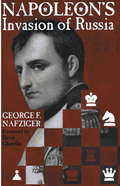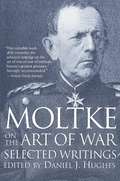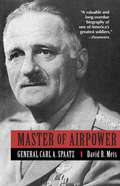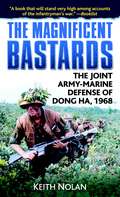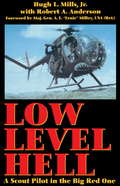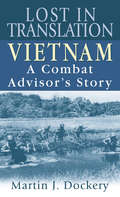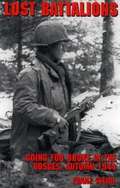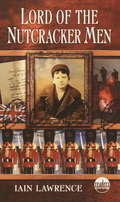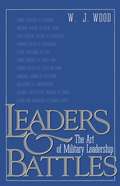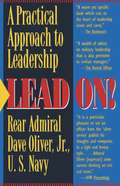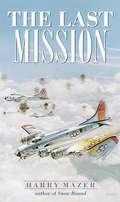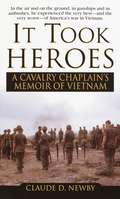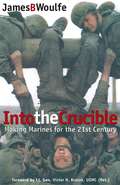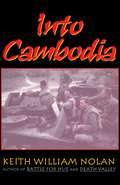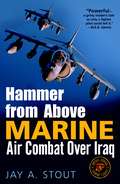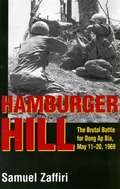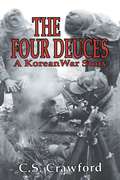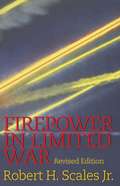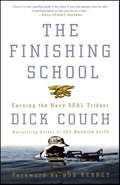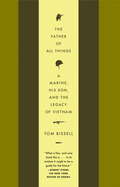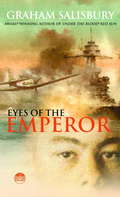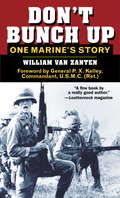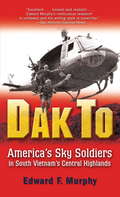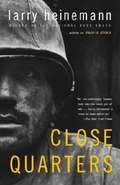- Table View
- List View
Napoleon's Invasion of Russia
by George NafzigerWidely-regarded as one of America's greatest historians, Dodge's work on Napoleon's invasion of Russia in 1812 is without parallel for scholarship or psychological sophistication. Beginning with Napoleon's doomed march on Russia, Dodge traces Napoleon's state of mind and the factors behind his decisions using personal letters and genuine reports. How could Napoleon, such a proficient strategist, have led his army into such an atrocious situation and underestimated the severity of the Russian winter? In one of the most imposing invasions ever attempted - Napoleon could draw upon 600,000 men and 250,000 horses - the Grande Armee's success seemed inevitable. Few could imagine that only 100,000 would reach Moscow and all without having achieved the decisive battle that Napoleon sought - one of the greatest disasters of military history was in the making. Dodge sheds new light on Napoleon's character as a soldier by focusing on his personal matters and behavior, putting aside his political concerns. The narrative provides the perfect introduction for those who want to learn more about Napoleon and the disastrous winter of 1812, as well as for the more seasoned Napoleonic scholar.
Moltke on the Art of War: Selected Writings
by Daniel HughesPrussian hero Field Marshal Helmuth Graf von Moltke was the architect of the German way of war.
Master of Airpower: General Carl A. Spatz
by David MetsMaster of Airpower recounts the life of General Carl "Tooey" Spaatz. He helped formulate the U.S. "strategic airpower" military doctrine in WWII and, in 1947, became chief of staff of the Air Force, a newly independent arm of the military. Master of Airpower offers a great history lesson about WWII and the U.S. Air Force.
The Magnificent Bastards: The Joint Army-Marine Defense of Dong Ha, 1968
by Keith NolanOn April 29, 1968, the North Vietnamese Army is spotted less than four miles from the U. S. Marines' Dong Ha Combat Base. Intense fighting develops in nearby Dai Do as the 2d Battalion, 4th Marines, known as "the Magnificent Bastards," struggles to eject NVA forces from this strategic position. Yet the BLT 2/4Marines defy the brutal onslaught. Pressing forward, America's finest warriors rout the NVA from their fortress-hamlets-often in deadly hand-to-hand combat. At the end of two weeks of desperate...
The Magnificent Bastards
by Keith NolanOn April 29, 1968, the North Vietnamese Army is spotted less than four miles from the U.S. Marines' Dong Ha Combat Base. Intense fighting develops in nearby Dai Do as the 2d Battalion, 4th Marines, known as "the Magnificent Bastards," struggles to eject NVA forces from this strategic position.Yet the BLT 2/4 Marines defy the brutal onslaught. Pressing forward, America's finest warriors rout the NVA from their fortress-hamlets-often in deadly hand-to-hand combat. At the end of two weeks of desperate, grinding battles, the Marines and the infantry battalion supporting them are torn to shreds. But against all odds, they beat back their savage adversary. The Magnificent Bastards captures that gripping conflict in all its horror, hell, and heroism."Superb . . . among the best writing on the Vietnam War . . . Nolan has skillfully woven operational records and oral history into a fascinating narrative that puts the reader in the thick of the action."-Jon T. Hoffman, author of Chesty"Real and gripping . . . combat with all the warts on."-Lieutenant General Victor H. Krulak, USMC (Ret.)From the Paperback edition.
Low Level Hell: A Scout Pilot in the Big Red One
by Hugh MillsThe aeroscouts of the 1st Infrantry Division had three words emblazoned on their unit patch: Low Level Hell. This was the perfect definition of what these pilots experienced as the ranged the skies of Vietnam. Mills tells the combat experiences of these aviators.
Lost in Translation: Vietnam A Combat Advisor's Story
by Martin J. DockeryIn September 1962, when Martin Dockery landed in Saigon, he was a young, determined, idealistic U. S. Army first lieutenant convinced of America’s imminent victory in Vietnam. While most of the twelve thousand U. S. military advisors in-country at the time filled support positions in Saigon and other major cities, Dockery was one of a handful of advisors assigned to Army of the Republic of Vietnam (ARVN) combat units. For eight months Dockery lived and fought in the heart of the Mekong Delta with an ARVN infantry battalion on missions and operations that often lasted several days. And for most of that time, whether tramping through the steaming, leech-infested jungle, hiking across canals, or engaging in sudden firefights, Dockery was the only American soldier with the unit. Dockery’s solitary assignment with ARVN during the infancy of U. S. involvement in Southeast Asia afforded him an understanding of Vietnam far more profound than most other Americans. Lost in Translation is his riveting account of the largely overlooked role of American combat advisors in the war. As he vividly evokes the sounds, smells, and vistas of the country and its people, Dockery depicts an army poorly trained, incompetent, and unwilling to fight for a government every bit as corrupt as that of the French colonial empire it replaced. Yet even worse than his daily fare of isolation, frustration, and danger was Dockery’s growing conviction that the advisory program was doomed. Though these dedicated, highly motivated advisors would do their best and persevere under the most trying circumstances, they would not succeed. The author’s eyewitness testimony provides inescapable evidence that as early as 1962 the writing was already on the wall concerning the outcome of the Vietnam War. Although it would take U. S. leaders more than a decade to divine what the young officer learned in a single year, Dockery’s personal and penetrating analysis of the war—which he presented in a lecture at a Special Forces facility in Germany one week after his tour in Vietnam ended—proved chillingly accurate. Those who send soldiers to war should consider the realities and truths within these pages. From the Hardcover edition.
Lost Battalions: Going for Broke in the Vosges, Autumn 1944
by Franz SteidlThe story of two World War II battalions--one German, one American--each cut off behind enemy lines in the same forest at the same time, and the heroic efforts to save them.
Lord Of The Nutcracker Men
by Iain LawrenceTen-year-old Johnny eagerly plays at war with the army of nutcracker soldiers his toymaker father whittles for him. He demolishes imaginary foes. But in 1914 Germany looms as the real enemy of Europe, and all too soon Johnny’s father is swept up in the war to end all wars. He proudly enlists with his British countrymen to fight at the front in France. The war, though, is nothing like what any soldier or person at home expected. The letters that arrive from Johnny’s dad reveal the ugly realities of combat — and the soldiers he carves and encloses begin to bear its scars. Still, Johnny adds these soldiers to his armies of Huns, Tommies, and Frenchmen, engaging them in furious fights. But when these games seem to foretell his dad’s real battles, Johnny thinks he possesses godlike powers over his wooden men. He fears he controls his father’s fate, the lives of all the soldiers in no-man’s land, and the outcome of the war itself. From the Hardcover edition.
Leaders and Battles: The Art of Military Leadership
by W. J. WoodIn a time when leadership is confused with management, W. J. Wood reminds us that the true determinant of military leadership is on the battlefield. --Harry Summers, author of On Strategy
Lead On: A Practical Guide to Leadership
by Dave OliverThe author draws on his years of experience with the nuclear-powered submarine fleet of the U.S. Navy to discuss leadership principles that can be applied to entrepreneurial organizations.
The Last Mission
by Harry MazerIn 1944, as World War II is raging across Europe, fifteen-year-old Jack Raab dreams of being a hero. Leaving New York City, his family, and his boyhood behind, Jack uses a false I.D. and lies his way into the U.S. Air Force.From their base in England, he and his crew fly twenty-four treacherous bombing missions over occupied Europe. The war is almost over and Hitler near defeat when they fly their last mission -- a mission destined for disaster. Shot down far behind enemy lines, Jack is taken prisoner and sent to a German POW camp, where his experiences are more terrifying than anything he'd ever imagined.From the Paperback edition.
It Took Heroes: A Cavalry Chaplain's Memoir of Vietnam
by Claude D. NewbyThe soldiers in 1st Cav fought some of Vietnam’s fiercest battles— and Chaplain Newby was there right beside them. For grunts in Vietnam, the war was a jungle hell of sudden death, endless suffering, and supreme courage. For Chaplain Newby, it was an honor to be chosen to share it with them. In enemy-held highlands and fetid jungles, Newby regularly accompanied patrols, company-sized missions, chopper strikes, and air rescues—sharing the men’s dreams, their fears, and their dying moments. Searing, brutally accurate, and dedicated to the truth, Claude Newby’s account of brave men fighting a tragic war captures that time in all its horror and heroism. Newby doesn’t shrink from exposing the war’s darker side; his quiet description of the murderous events that came to be known as “the Mao incident” proves that justice can prevail. Ultimately, Newby’s riveting stories reveal the tremendous valor and sacrifices of ordinary Americans facing constant danger, shattering losses, and an increasingly indifferent nation. His book is a shining tribute to those who fought, those who died, and those who came home to a country determined to forget them. From the Paperback edition.
Into the Crucible: Making Marines for the 21st Century
by James WoulfeThis book describes the 54 hour exercise in which recruits are put through a series of taxing challenges whilst being denied sufficient food or sleep. Woulfe compares this training exercise with other schemes in other branches of service.
Into Cambodia: Spring Campaign, Summer Offensive, 1970
by Keith William Nolan"Most of us remember (the 1970 Cambodian campaign) best for the killings of four young people at Kent State. Nolan wants us to remember that it killed a lot of young Americans in Cambodia as well. " -- The Capital Tittles (Madison, WI)"This is combat narrative at its best. Nolan has mastered the soldier's slang and weaves it expertly into the account . . . . full of combat anecdotes detailing battlefield leadership successes and failures. " -- Military Review
Hammer from Above: Marine Air Combat Over Iraq
by Jay A. StoutIn Operation Iraqi Freedom, the Marine Corps' ground campaign up the Tigris and Euphrates was notable for speed and aggressiveness unparalleled in military history. Little has been written, however, of the air support that guaranteed the drive's success. Paving the way for the rush to Baghdad was "the hammer from above"-in the form of attack helicopters, jet fighters, transport, and other support aircraft. Now a former Marine fighter pilot shares the gripping never-before-told stories of the Marines who helped bring to an end the regime of Saddam Hussein. As Jay Stout reveals, the air war had actually been in the planning stages ever since the victory of Operation Desert Storm, twelve years earlier. But when Operation Iraqi Freedom officially commenced on March 20, 2003, the Marine Corps entered the fight with an aviation arm at its smallest since before World War II. Still, with the motto "Speed Equals Success," the separate air and ground units acted as a team to get the job done. Drawing on exclusive interviews with the men and women who flew the harrowing missions, Hammer from Above reveals how pilots and their machines were tested to the limits of endurance, venturing well beyond what they were trained and designed to do. Stout takes us into the cockpits, revealing what it was like to fly these intense combat operations for up to eighteen hours at a time and to face incredible volumes of fire that literally shredded aircraft in midair during battles like that over An Nasiriyah . With its dynamic descriptions of perilous flights and bombing runs, Hammer from Above is a worthy tribute to the men and women who flew and maintained the aircraft that so inspired their brothers in arms and terrified the enemy. From the Hardcover edition.
Hamburger Hill: The Brutal Battle for Dong Ap Bia: May 11-20, 1969
by Samuel ZaffiriThe battle for Ap Bia Mountain (Hill 937), was one of the fiercest of the entire Vietnam War.
The Four Deuces: A Korean War Story
by C. S. CrawfordThese memoirs are not an attempt to answer, solve, or resolve the problems arising from or about the three-year-long Korean War or the much longer stalemate that followed. This story was written to let you know how one very young, very scared marine saw his very first war and how he reacted to the killing and the mayhem of it. The stories are my view of that war, a war gone to ground in the trench lines. Dig into the stories and you may find something you were not expecting.I am well aware that my view of the Korean War has no historical importance. Still, it is my view, and I want to share it with you. I do not have a cause to plead or an ax to grind, and that alone ought to count for something. My memoirs are selective and most certainly tainted with time. My recollections are a lot like boot mines, and ought to be approached with caution. I was a grunt, a Four Deuce forward observer, assigned to duty with a marine infantry company every time the 1st Marine Regiment went back up on line. During the time I was in Korea my boondockers were firmly planted in trench-line mud. When I came home in September 1952, I was proud that I had helped in the attempt to stop Communism in Korea. I was proud of all the men I served, and served with, and I was a little bit proud of myself, too.From the Trade Paperback edition.
Firepower in Limited War: Revised Edition
by Robert ScalesExamines how the United States can employ its massive, high-tech firepower in an effective manner when future conflicts are likely to be limited and of low intensity.
The Finishing School: Earning the Navy SEAL Trident
by Dick CouchIn America's new war, the first guns in the fight are special operations forces, including the Navy SEALs, specially trained warriors who operate with precision, swiftness, and lethal force. In the constantly shifting war on terror, SEAL units--small in number, flexible, stealthy, and efficient--are more vital than ever to America's security as they take the battle to an elusive enemy around the globe. But how are Navy SEALs made? What special training and preparation sharpen the physical skills and intangible character of a regular soldier into that of an elite warrior? In the acclaimedWarrior Elite, former Navy SEAL Dick Couch narrated one SEAL class's journey through BUD/S training, the brutal initial course that separates out candidates with the character and stamina necessary to begin training as Navy SEALs. InThe Finishing School, Couch follows SEALs into the next levels of training, where they further develop their endurance and strength, but also learn the teamwork and finely honed skills they'll need to fight with the best--and win. Dick Couch spent six months living with and observing SEALs in training for operational readiness in the months leading up to the Iraqi campaign. He follows them on the ground and in the water as they undergo SEAL Tactical Training, where they master combat skills such as precision shooting, demolitions, secure communications, parachuting, diving, and first aid. From there, the men enter operational platoons, where they subordinate their individual abilities to the mission of the group and train for special operations in specific geographical environments. Never before has a civilian writer been granted such close access to the training of America's most elite military forces. The Finishing Schoolis essential reading for anyone who wants to know what goes into the making of America's best warriors.
The Father of All Things
by Tom BissellThe Father of All Things is a riveting, haunting, and often hilarious account of a veteran and his son's journey through Vietnam. As his father recounts his experiences as a soldier, including a near fatal injury, Tom Bissell weaves a larger history of the war and explores the controversies that still spark furious debate today. Blending history, memoir, and travelogue,The Father of All Things is a portrait of the war's personal, political, and cultural impact from the perspective of the generation that grew up in the wake of the conflict. It is also a wise and revelatory book about the bond between fathers and sons.
Eyes of the Emperor
by Graham SalisburyEddy Okubo lies about his age and joins the army in his hometown of Honolulu only weeks before the Japanese bomb Pearl Harbor. Suddenly Americans see him as the enemy--even the U.S. Army doubts the loyalty of Japanese American soldiers.Then the army sends Eddy and a small band of Japanese American soldiers on a secret mission to a small island off the coast of Mississippi. Here they are given a special job, one that only they can do. Eddy's going to help train attack dogs. He's going to be the bait.
Don't Bunch Up: One Marine's Story
by William Van ZantenCaptain William Van Zanten was one of the “Magnificent Bastards” of the 2nd Battalion, 4th Marines, in 1966–a year when any day could bring death or dismemberment from a Bouncing Betty or a punji stake, a firefight or a sniper bullet. He and his men faced B-52-sized mosquitoes, rain, heat, disease, and a determined and elusive enemy who kept the Marines off-balance, edgy, and sleepless. Yet Van Zanten persevered with a soldierly professionalism built on rigorous training. Dedication and boot camp forged the volunteer Marines of the early war years, so when the stakes went through the roof in Vietnam, commitment of man to man and man to unit was total. They supported each other with a soldier’s intimacy and endured with a soldier’s humor–and together that meant survival. From the Paperback edition.
Dak To: The 173rd Airborne Brigade in South Vietnam's Central Highlands
by Edward F. MurphyTheir officers and senior noncoms were drawn from the U.S. Army's elite. An all-volunteer unit of paratroopers, the "Sky Soldiers," men of the 173rd Airborne Brigade (Separate) were MACV's "fire brigade," rushed to stem the tide wherever the fighting was heaviest. In 1967 the attention of General Giap and his North Vietnamese Army (NVA) focused on a small mountain hamlet in the Central Highlands called Dak To. From June to November 1967, in the hills and valleys surrounding Dak To, the 173d fought some of the bloodiest battles of the entire Vietnam War.
Close Quarters
by Larry HeinemannFrom the moment his first novel was published, Larry Heinemann joined the ranks of the great chroniclers of the Vietnam conflict--Philip Caputo, Tim O'Brien, and Gustav Hasford. In the stripped-down, unsullied patois of an ordinary soldier, draftee Philip Dosier tells the story of his war. Straight from high school, too young to vote or buy himself a drink, he enters a world of mud and heat, blood and body counts, ambushes and firefights. It is here that he embarks on the brutal downward path to wisdom that awaits every soldier. In the tradition of Naked and the Dead and The Thin Red Line, Close Quarters is the harrowing story of how a decent kid from Chicago endures an extraordinary trial-- and returns profoundly altered to a world on the threshold of change.
